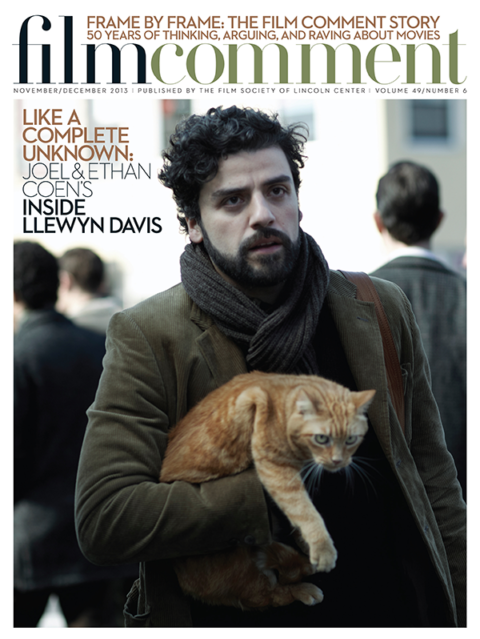
There is a vivid party scene at the middle of Abdellatif Kechiche’s sprawling Palme d’Or winner Blue Is the Warmest Color (aka, in France, La Vie d’Adèle: Chapitres 1 et 2) that encapsulates some of the film’s strengths and weaknesses. Adèle (Adèle Exarchopoulos), a young schoolteacher who is feeling her way through early adulthood and her first serious love affair, has earnestly prepared a meal in honor of her artist girlfriend, Emma (Léa Seydoux). As the evening wears on, Exarchopoulos conveys Adèle’s loneliness and awkwardness among an unfamiliar and older upper-class crowd with painful subtlety. And yet the scene, which also marks a turning point in the central relationship, falters when some of Emma’s supposedly sophisticated friends make eager remarks about art and female sexuality that seem to mirror the director’s problematic approach toward the representation of women.
By now the controversies associated with the film—including Kechiche’s on-again, off-again rifts with his two stellar actresses, partly over a lengthy and explicit sex scene—have been well documented. Loosely based on a moodily romantic graphic novel that its author, Julie Maroh, began writing when she was still a teenager, the film has rather scattered ambitions, some of which pay off better than others. As in Kechiche’s earlier work, social class, and the divisions it creates, are a vital thread; he even changed the first name of the story’s passionate protagonist from Clémentine to that of his actress, partly because it means “justice” in Arabic. His fascination and familiarity with the world of pedagogy, as shown here in Adèle’s touching reverence for teaching, is another notable characteristic.

The story opens with Adèle in her teenage years—a time when she discovers a heady love for literature but is troubled by a nagging feeling that she doesn’t fit in. A relationship with a boy gives her no pleasure, and when she exchanges glances with the confident, slightly older, blue-haired Emma walking by on the street, her fate is sealed. A wrenching incident in which Adèle’s friends gang up on her, accusing her of being a lesbian, makes her relationship with Emma an even more welcome escape. Throughout the idyll of their courtship and the years that follow, Kechiche often keeps the camera close to the actors, capturing a feeling of sensuality even while characters are talking or eating. One isn’t always sure where one is in a given space, but bodies and faces are always close at hand.
As for the much-discussed sex scene, which is clearly meant to be the film’s pivotal moment, it is so tediously mechanical that one finds oneself simply admiring the actresses’ beautifully lit flesh. Kechiche has said that he aimed to shoot the intimate scenes between the women to resemble painting and sculpture, and, troublingly, he has succeeded; the sex may be strenuous, but the staging is so artful that it evokes passivity. It hardly seems a coincidence that these shots recall nudes by Gustave Courbet, such as Sleep (1866), which depicts a lesbian couple entwined in postcoital bliss—a masterpiece of 19th-century painting that is more than a little outdated in its voyeuristic perspective on female desire. Courbet’s The Origin of the World (1866), a vision of female anatomy as a lush, mysterious source of power, also sums up the film’s approach to female sexuality. It doesn’t help that Emma makes paintings of languid, idealized naked young women.
Ultimately, it is mainly the electrifying performances that Kechiche presumably elicited from Seydoux and Exarchopoulos that make Blue Is the Warmest Color a memorable film, however flawed. Exarchopoulos takes us deep inside Adèle’s skin in the film’s more compelling final third, and she is especially heartbreaking when she portrays the character’s attempts to move on with stunned dignity despite the crushing physical isolation she feels even years after the carnal relationship has run its course. When she walks uncertainly away from a gallery opening at the film’s conclusion, it feels as though the world has ended.








